Paul Dash, Errol Lloyd and John Lyons @ Kettle’s Yard
12 November 2022 – 19 February 2023
Paint Like the Swallow Sings Calypso.
‘Carnivals’ and their mass of pulsating flesh, provide people across the Globe with the opportunity to invoke history, roots, folklore and religion in the streets of their communities. Sometimes dark, at other times exuberant and colourful, what carnivals do is provide a focal point for those cultures.
Paul Dash, Errol Lloyd and John Lyons, all born in the Caribbean, curate this fascinating exhibition at Kettle’s Yard, involving their own works in dialogue with other works by artists found in the Kettle’s Yard and Fitzwilliam Museum collection.
European carnivals, many with pagan roots, collided with African traditions through the pain and horror of the transatlantic slave trade and through the conquests of the Americas, to produce a complex tapestry of interwoven significance and meanings.
Many of the works on show were representational and figurative and one would think that those which captured the essence of the carnival spirit more successfully involved a degree of fluidity and movement, forcing the viewer to surrender to its rhythms. However as the images below testify, the skill of a great artist lies in their ability to connect with the viewer irrespective of artistic style.
Here is a selection of the exhibition highlights.
‘Masked Stick-Lick Fighters Parade’ (2019)
Paul Dash
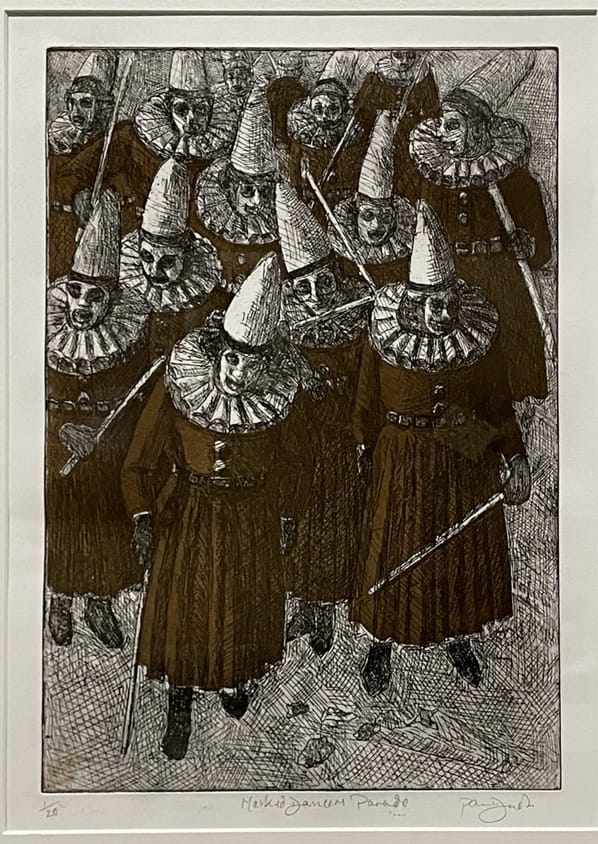
Masked Stick-Lick Fighters Parade (2019)
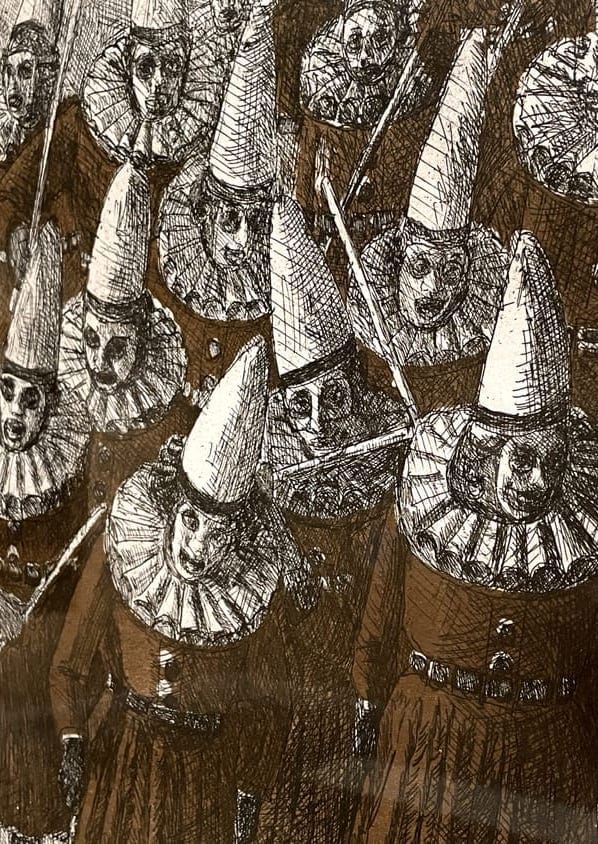
Masked Stick-Lick Fighters Parade (2019) detail
We’re not looking at clowns in this image. An unsettling work that oozes menace.
The ruffles reminiscent of those worn at the time of the European settlers and slave traders. The pointed white hats a nod to those worn by the KKK. Both represent symbols of violence, racism and oppression. Yet the sticks, part of a martial art form born from the plantations of the Caribbean symbolise the determination of the enslaved to fight back.
This etching is a melting pot of cultural and historical significance appropriated to highlight colonial racism and aggression.
‘Dancers Masquerade at the Sambadrome’ (2015)
Paul Dash
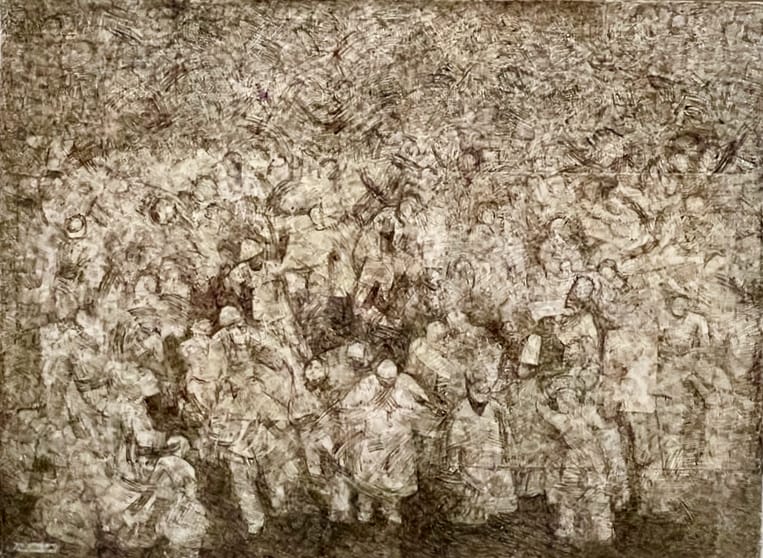
‘Dancers Masquerade at the Sambadrome’ (2015)
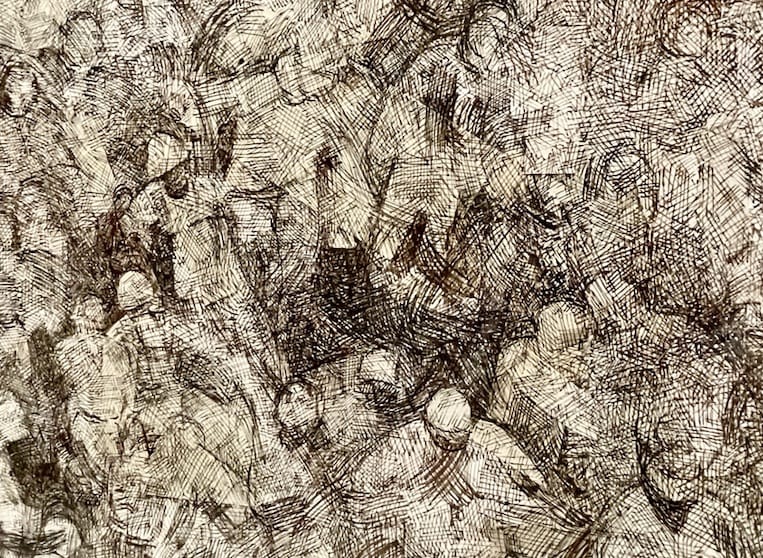
‘Dancers Masquerade at the Sambadrome’ (2015) detail
This work speaks to anyone who has been at a carnival. A multitudinous throng of people; a compact mass of bodies pulling in all directions. The remarkable quality of this work is how Dash has captured this claustrophobic yet exhilarating experience using the simplest of drawing techniques, namely the cross-hatch.
‘Guatemala no.7 (Dying Vulture)’ (1957)
William Congdon
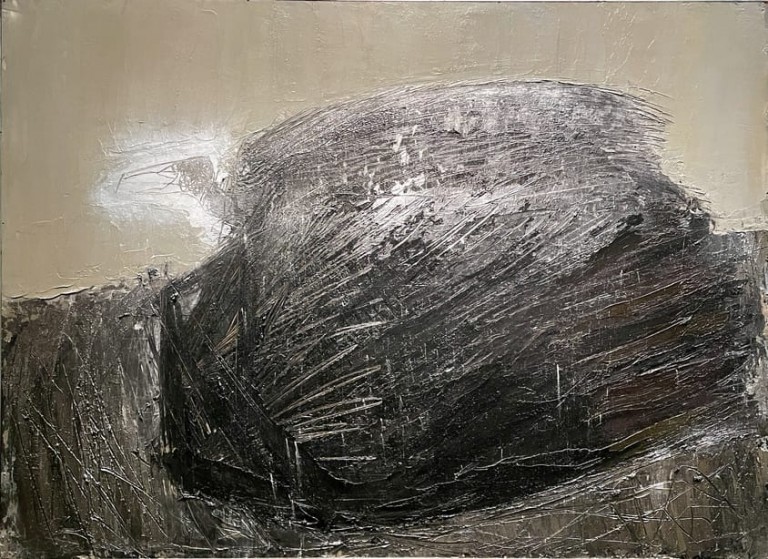
Guatemala No. 7 (1976)
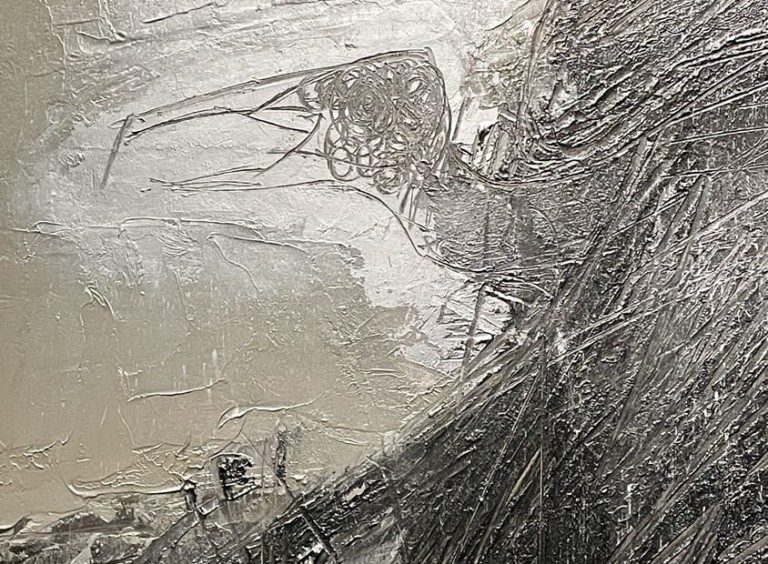
Guatemala No. 7 (1976) detail
The carnival often embued with spiritual significance, acting as a portal between the living and the dead. Congdon takes the condor, perceived as a messanger between the two worlds and creates a stunning oil painting.
Urgent sgraffito, gives this painting an ominous violence.
‘ A Village Festival, With a Theatrical Performance and a Procession in Honour of St Hubert and St Anthony ’ (1632)
Peter Brueghel the Younger
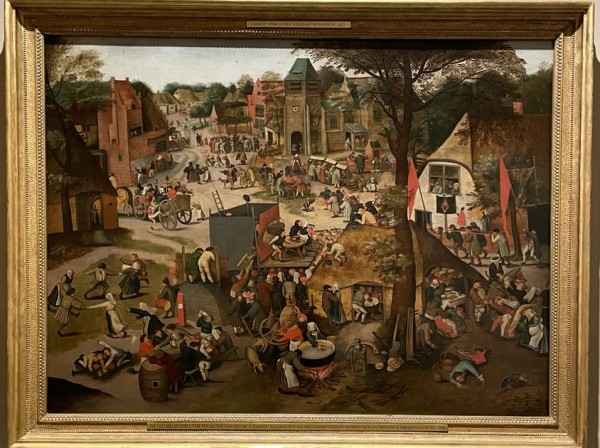
A Village Festival, With a Theatrical Performance and a Procession in Honour of St Hubert and St Anthony (1632)
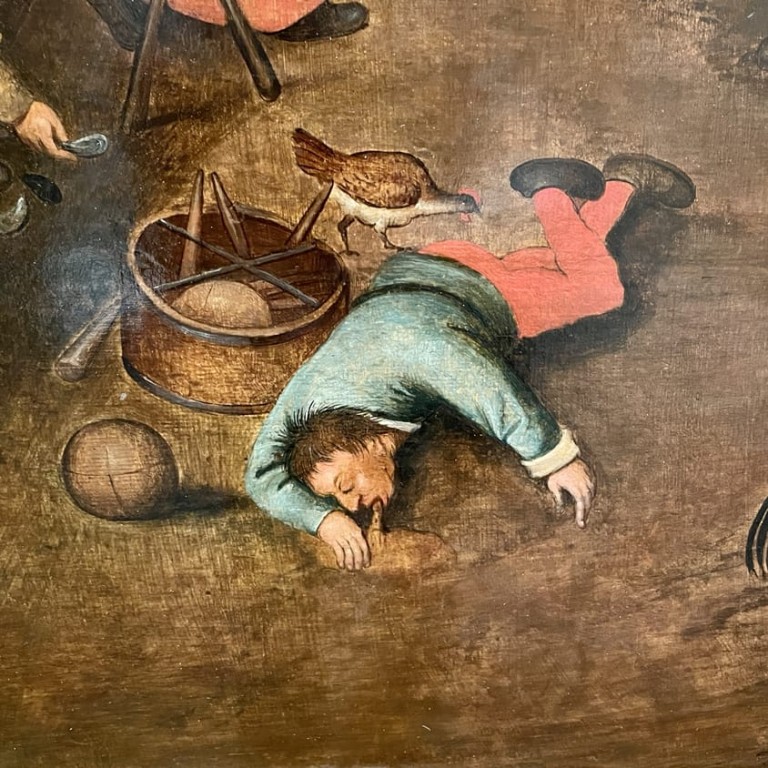
Detail
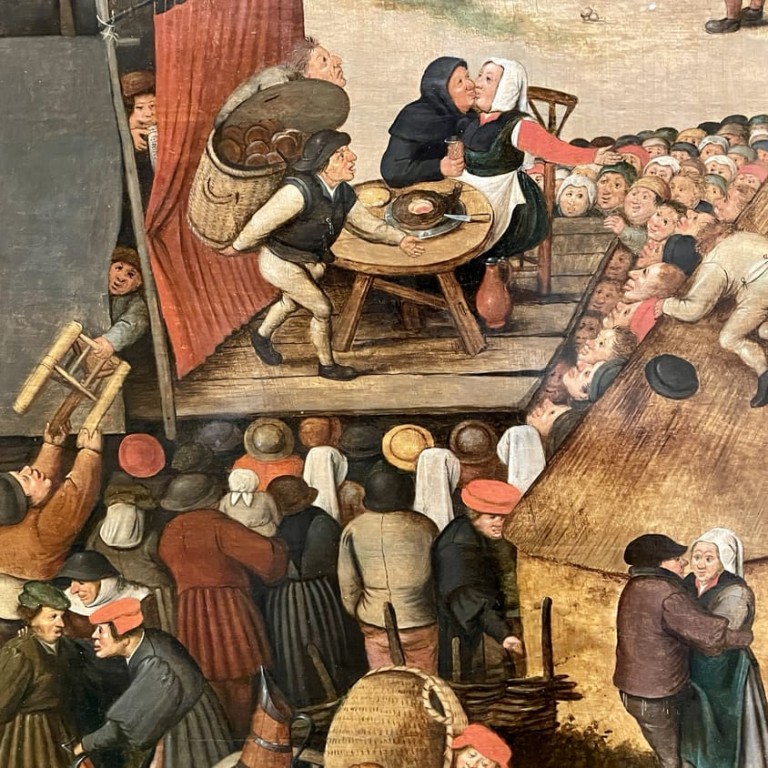
Detail
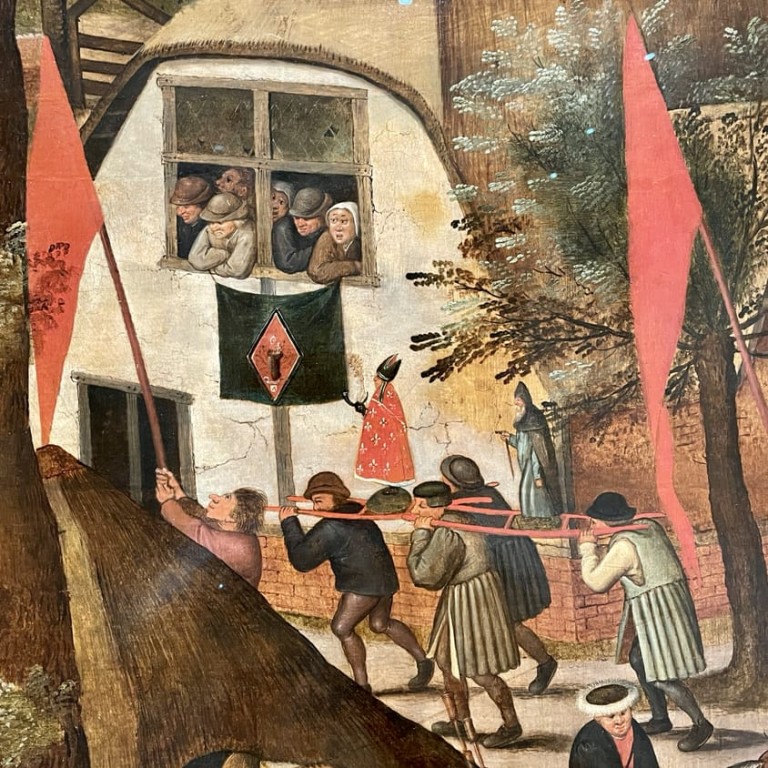
Detail
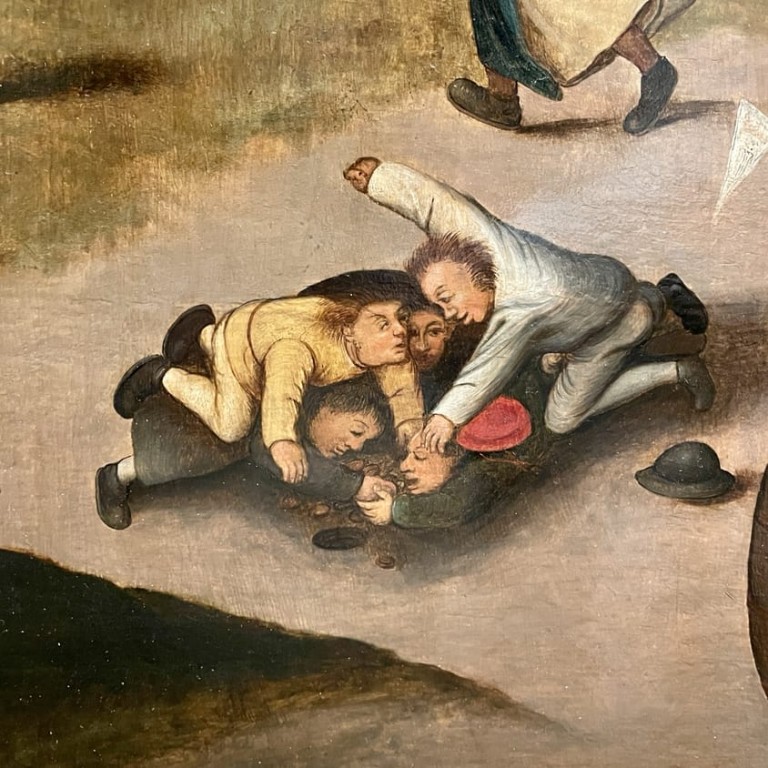
Detail
Brueghel captures the reality of the village carnival to perfection in this detailed painting. The central purpose of this carnival is its religious procession, but as with many such celebrations the religion simply provides the backdrop for an orgy of chaos. The crowded entertainment, the fighting and the vomit are in fact the reality of this display of humanity.
‘ Los Caprichos (plate 48)’ (n.d)
Francisco de Goya
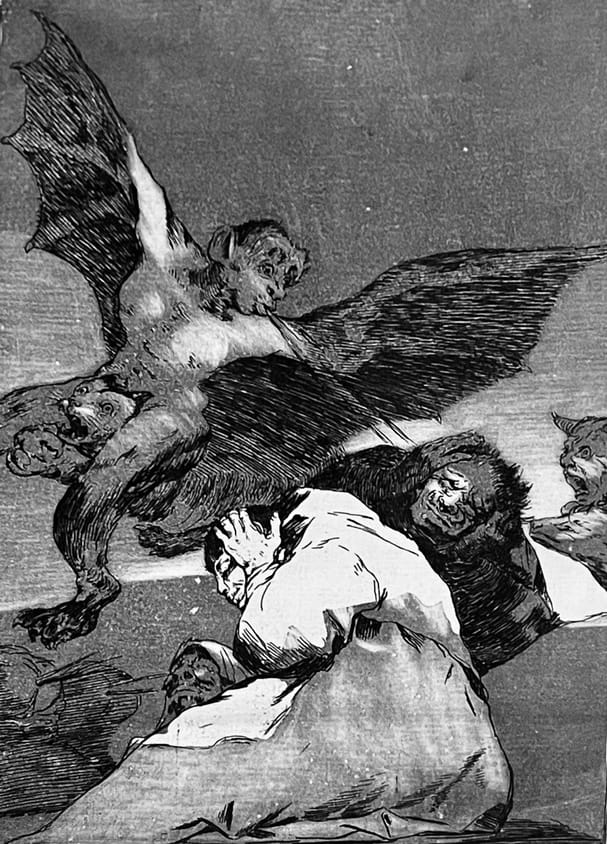
Los Caprichos (plate 48) (n.d)
It was with Goya’s ‘Disasters of War’ that I was first presented with an artist conveying a prolonged social commentary across a sustained body of work. It has stayed with me ever since. Goya’s series of eighty etchings ‘Los Caprichos’, attempts the same, produced in the latter part of his life when Goya was dissatisfied with Spanish society, its superstitions and ignorance.
Here, a flying demon infecting rational thought through the spread of lies and rumour.
It speaks to the present like few works manage to do. Magnificent.
This exhibition successfully weaves a carnivalesque narrative through the different periods and styles of the artwork.
History, religion, superstition, folklore, racism and violence depicted in a myriad of forms. Wonderful.